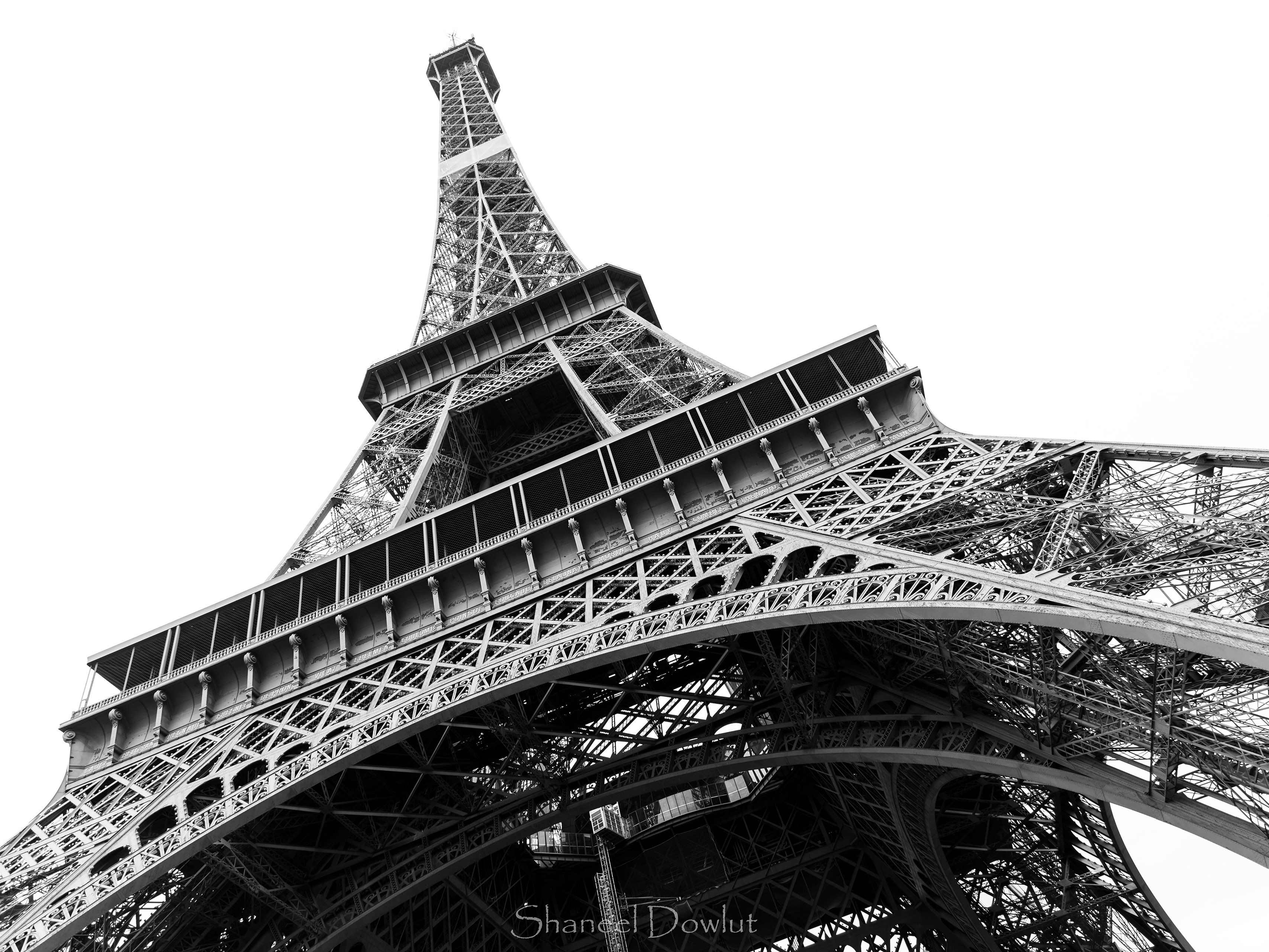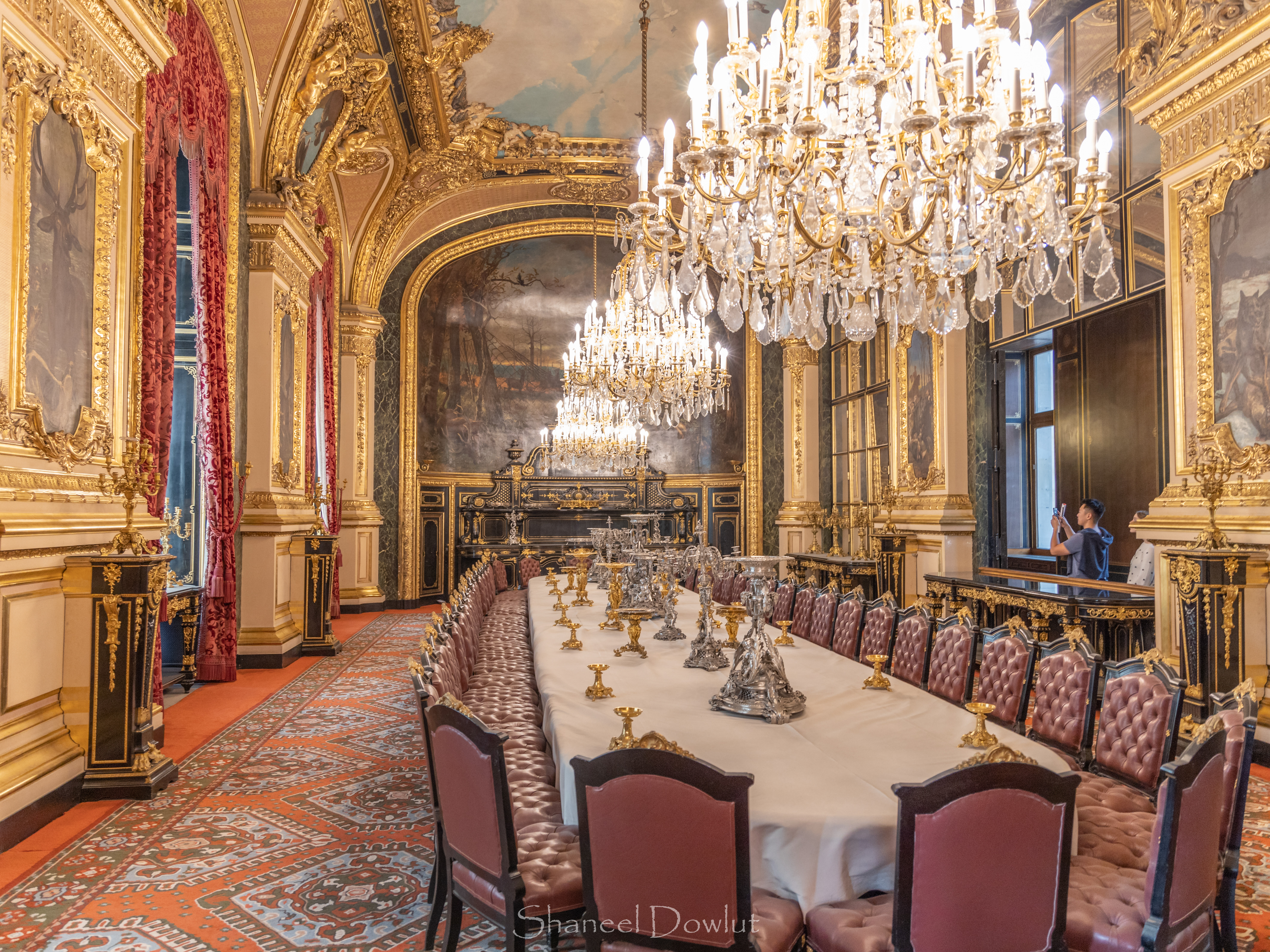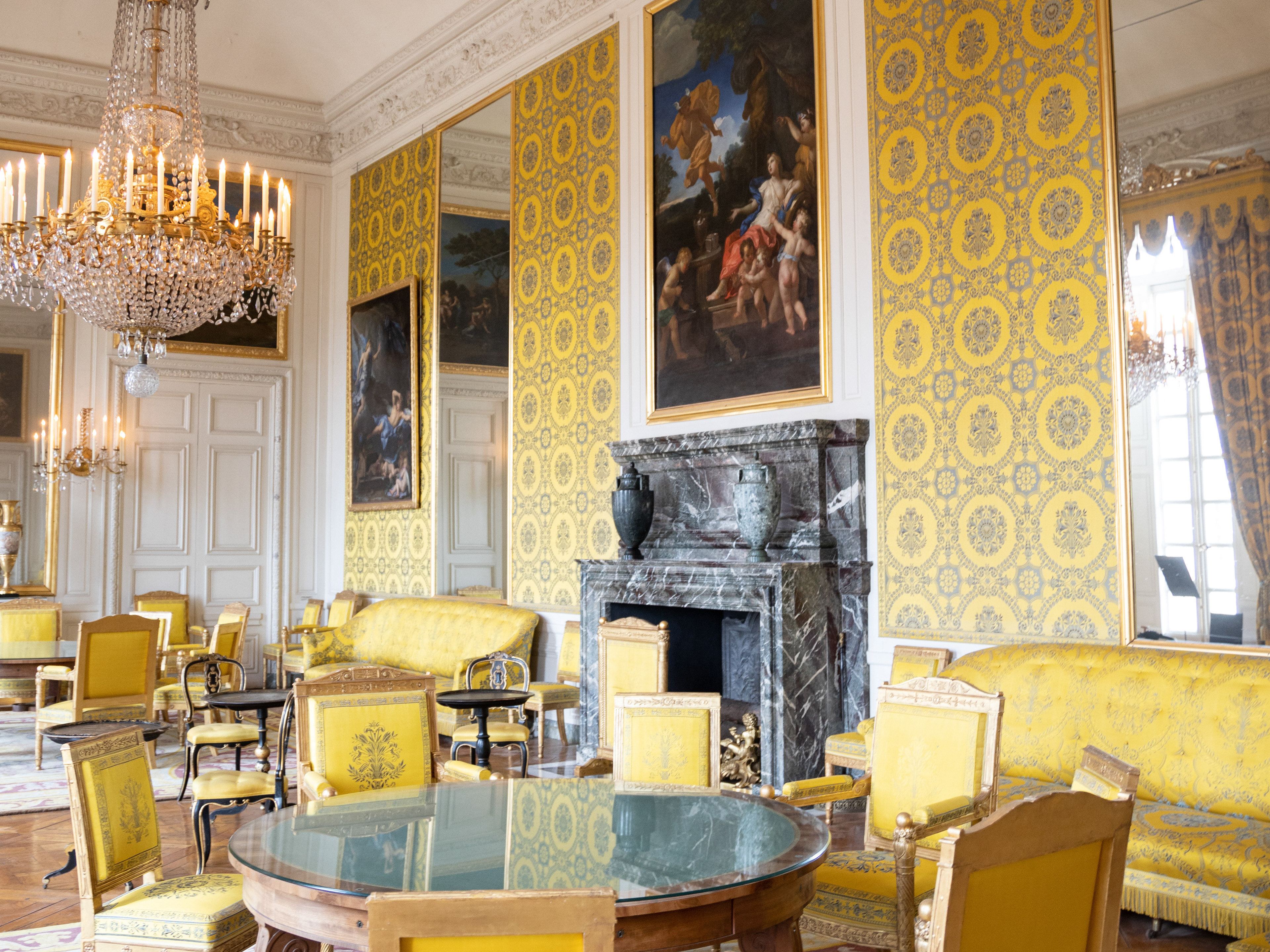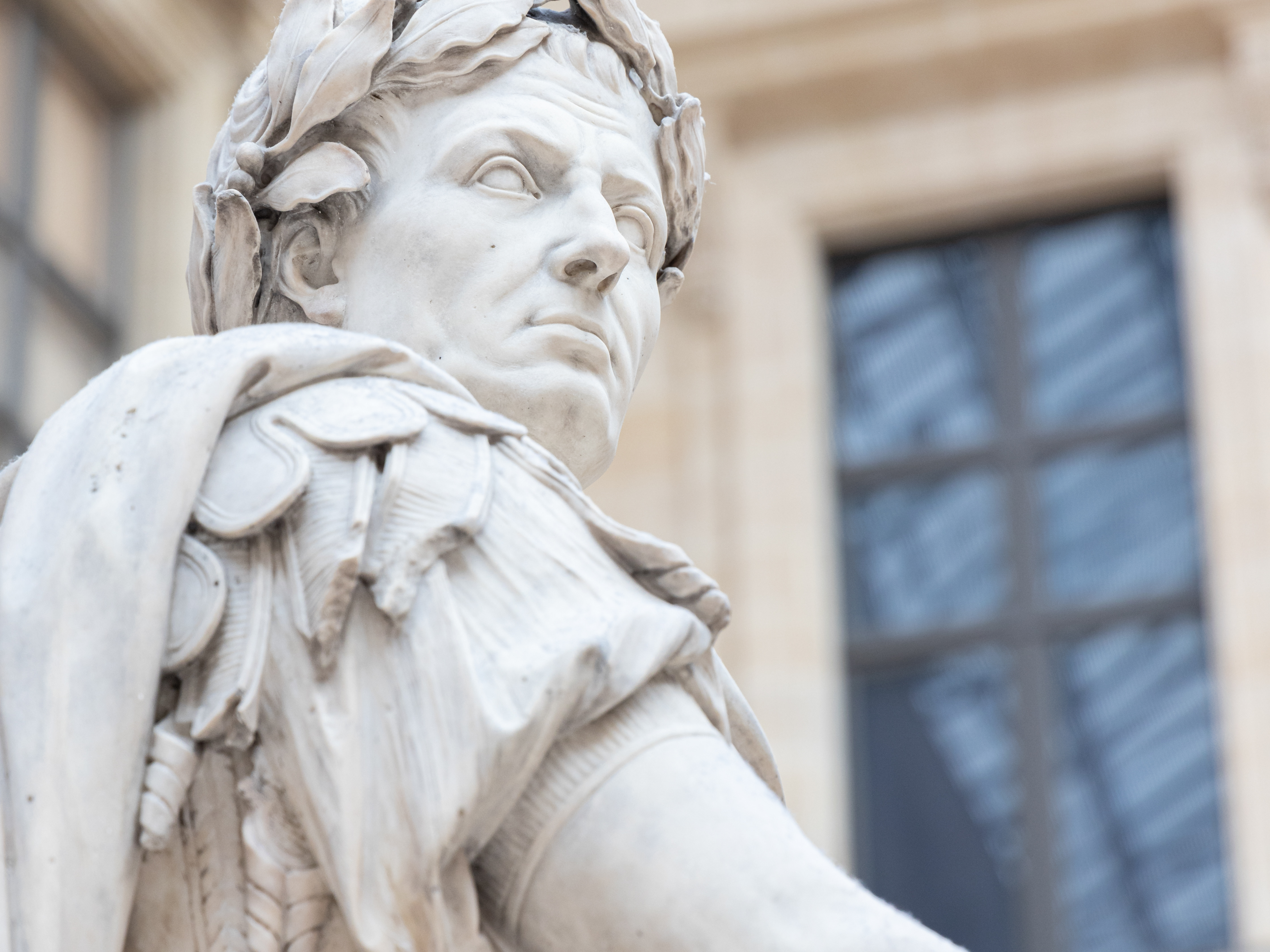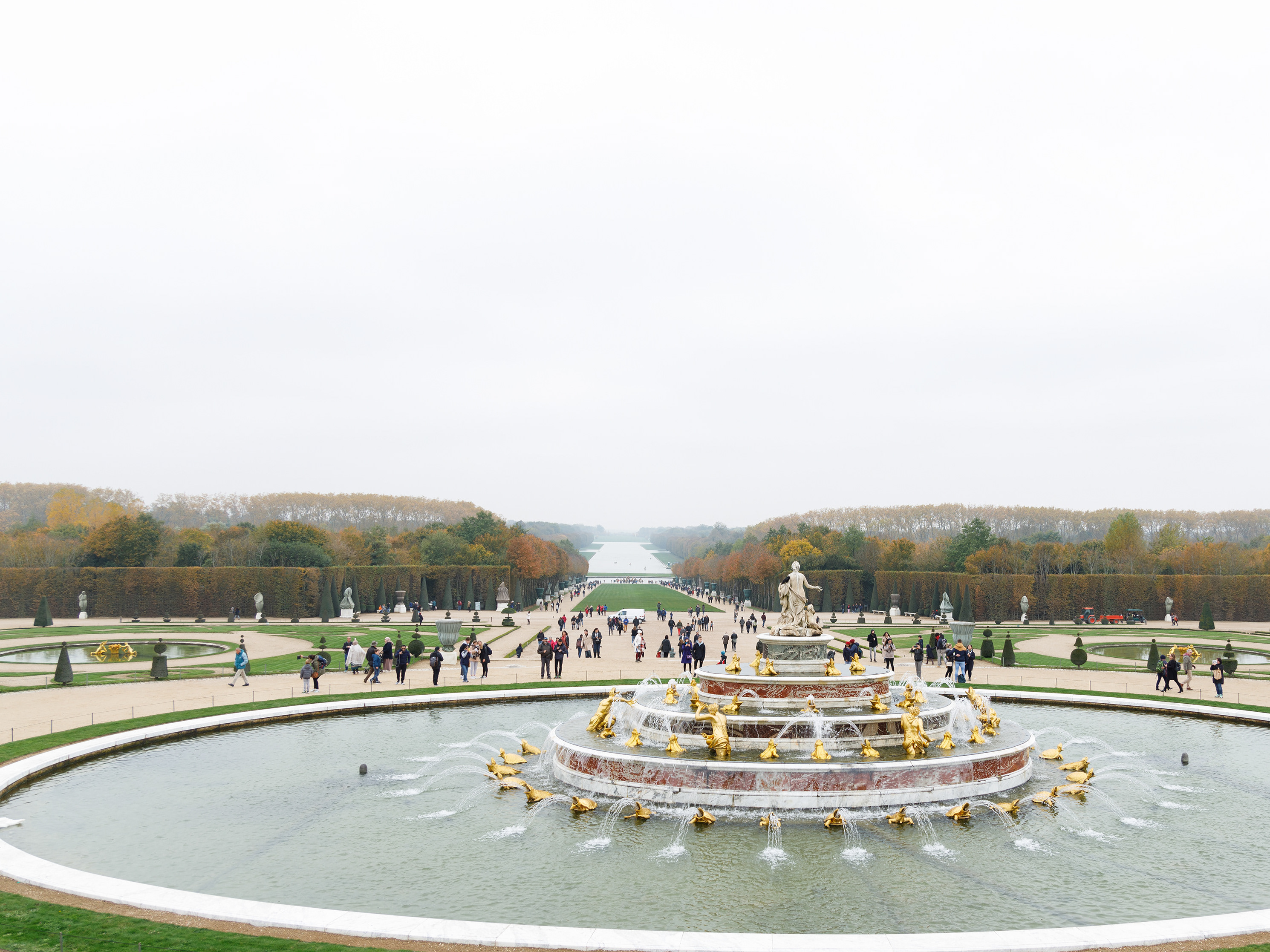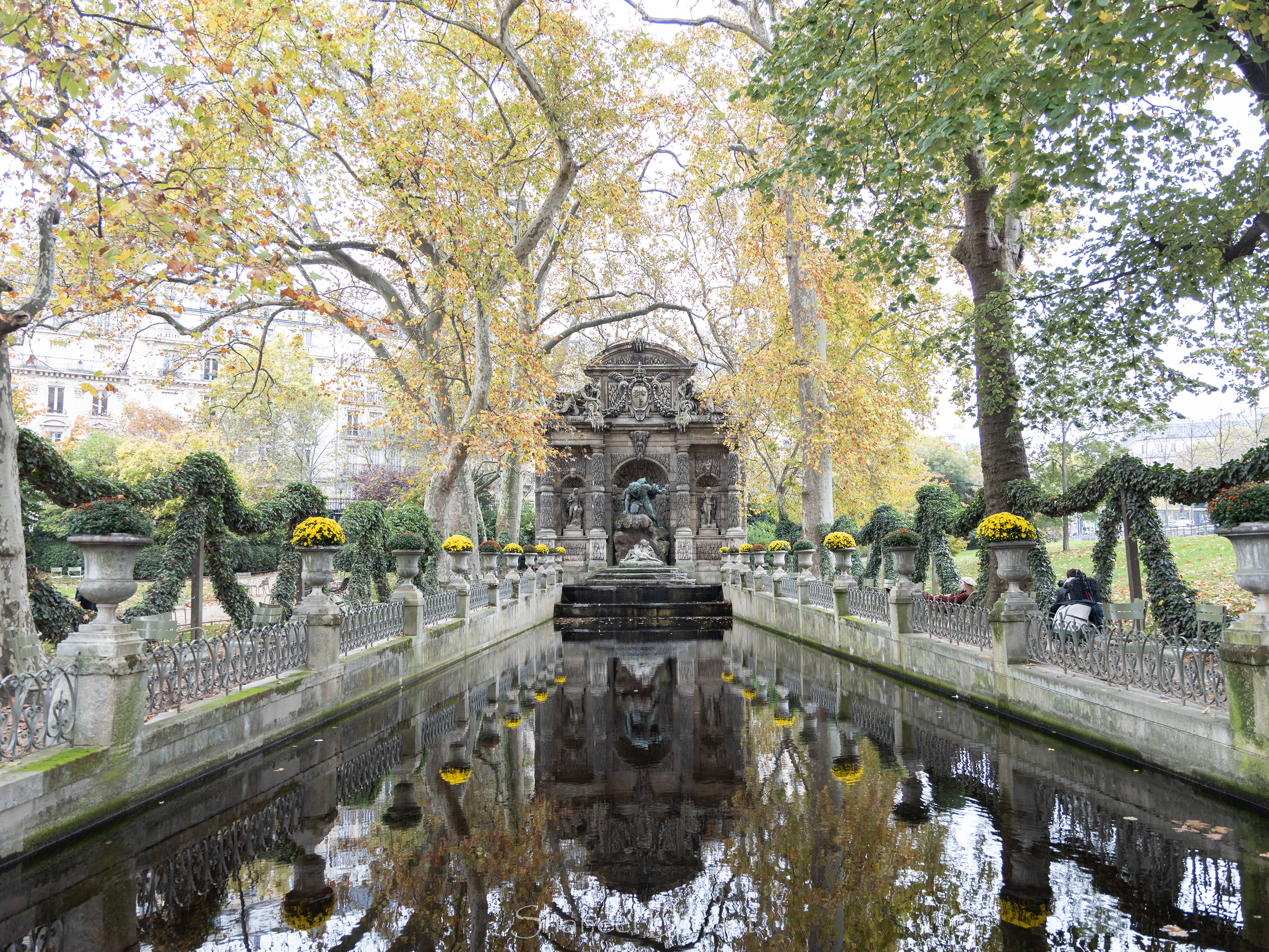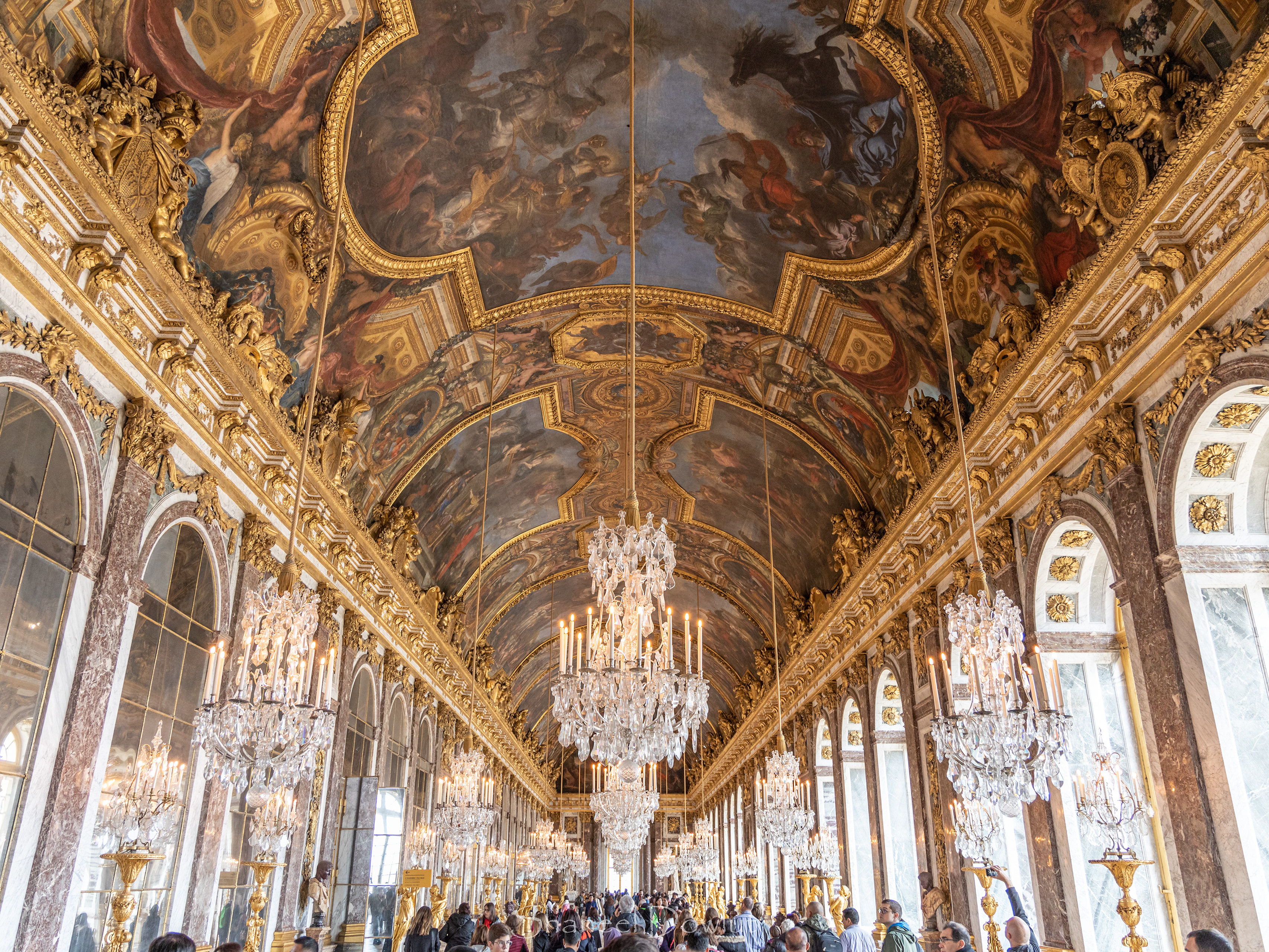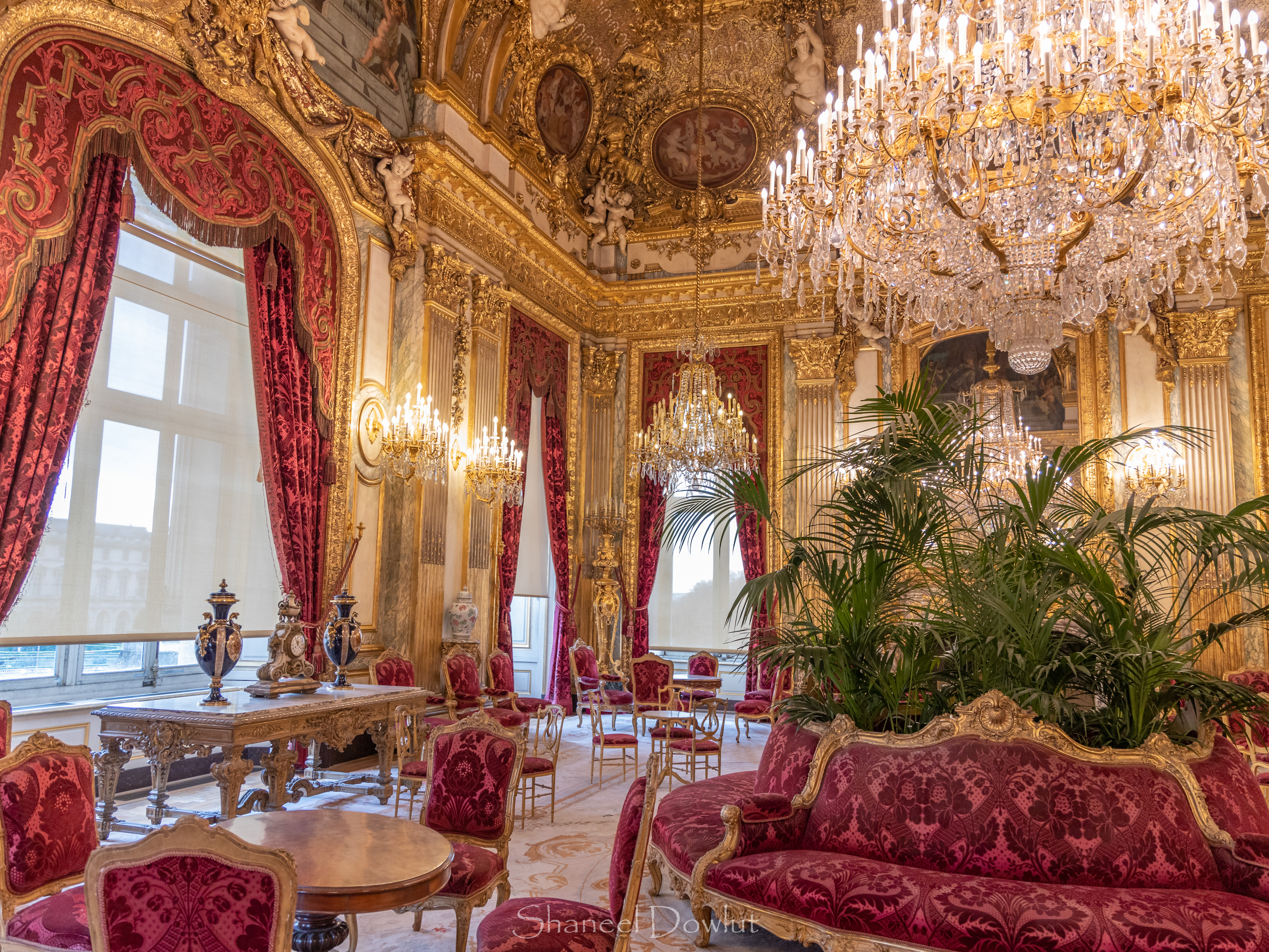Walking from the Jardin des Tuileries towards the Arc de Triomph du Carrousel on an early November morning
The Louvre Museum
The ceilings of the Louvre add another aspect of luxury. You will find yourself gazing at the ceilings in every piece of the Chateau.
Ceiling: The Fall of Icarus by Merry-Joseph Blondel
According to legend, Icarus ignored his father Daedalus's warnings and flew too close to the chariot carrying the sun across the heavens, melting the wax in his wings and falling to his death. The presence of the chariot is indicated by the four foreshortened horses. In the center is the twisted figure of Icarus. His disintegrating wings and the look of terror on his face are drawn very realistically. On his left is Daedalus, turning towards his son. His expression reflects his anguish at not being able to save the boy.
The most popular room in The Louvre? Yes, it's the one with the Mona Lisa. Here, visitors line up to take a closer look at the most famous painting in the world. On the opposite side of the room, we can see The Wedding at Cana with Jesus seated in the middle.
The most famous painting in the world - The Mona Lisa by Leonardo da Vinci
The Throne of Napoleon III
The Coronation of Emperor Napoleon and the Crowning of Empress Joséphine in Notre-Dame Cathedral on December 2, 1804
Jacques Louis David was commissioned by Napoleon I to paint this huge canvas which depicts the splendor of the emperor’s Coronation while conveying its political and symbolic message. The painter himself was present at the ceremony, and once back in his studio portrayed the colorful congregation with realism, combining accuracy with artistry while also complying with the Emperor’s instructions. He thus met the challenge of producing a monumental work that would glorify the event and occupy a unique place in the history of painting.
Napoleon thought it to be a good idea to have the Pope bless him in order to turn France into a Christian monarchy. However, it was common that someone who wanted to be blessed by the Pope traveled to Rome. Napoleon wanted instead for the Pope to come to France to establish his dominance in power over the Pope. The Pope, though, initially did not want to travel to Paris without a good religious reason. In the end, the Pope reluctantly agreed, having the idea that by coming to Paris he could get some favorable concessions from Napoleon to the Catholic Church. This, however, turned out to be a false idea and the Pope had to bless Napoleon against his will. Finally, at the moment the Pope wanted to crown Napoleon, he took the crown from the Pope and put it on his own head. This act was seen as a public humiliation of the Pope.
Jacques Louis David finished the original version of this painting in 1807. It was originally on display in the Palace of Versailles but was moved to the Louvre in 1889. Between 1808 and 1822, David painted a second version of this painting for some American businessmen. The Palace of Versailles acquired it in 1947. David painted this copy based on the preparatory drawing he had for the original, and the two versions differ slightly from each other, though the differences are minor.
Under The Open Roof
People watching is another fruitful experience at The Louve.
The Pyramids at Dusk
